#prepper
Text
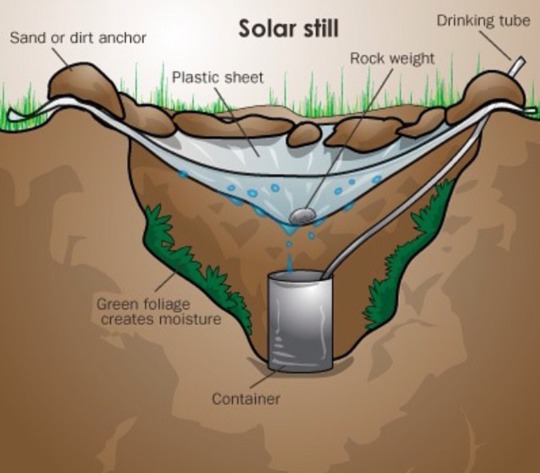
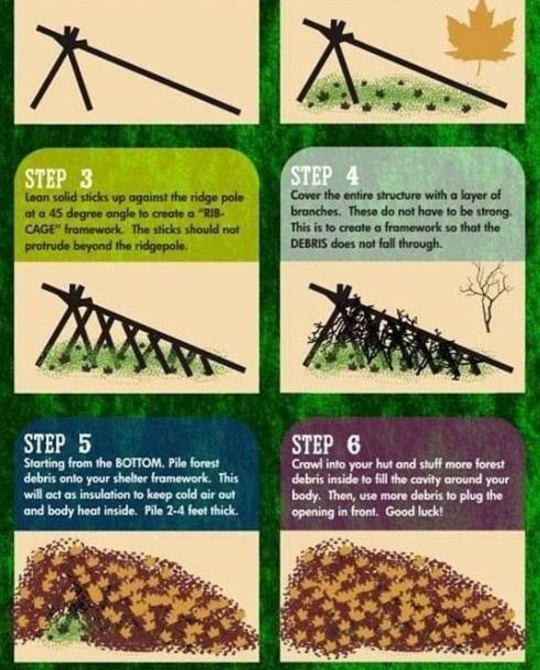




Helpful things I've saved over the years
#hiking#camping#prepping#outdoors#nature#naturecore#prep#prepper#helpful#tips#diy#survival#survival tips#apocalypse#bug out#lol#funny#memes#meme#haha
270 notes
·
View notes
Text
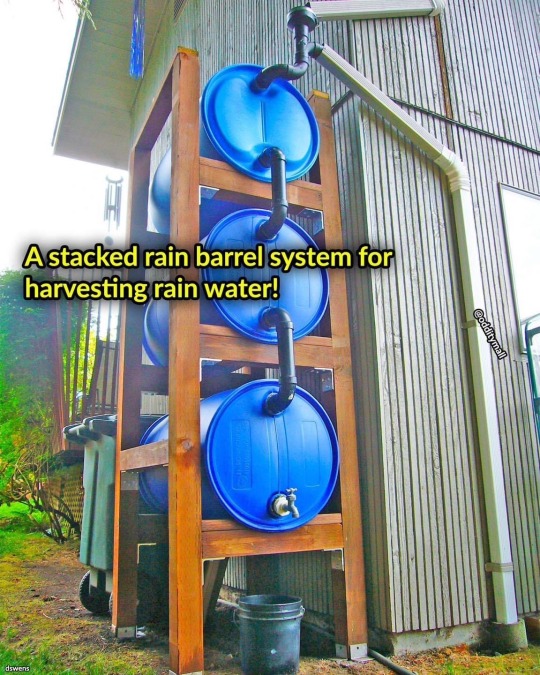
See more rain harvesting ideas.
#survival#yearzerosurvival.com#outdoors#preppers#survival blog#preppertalk#prepper blog#prepper#shtf#prepper network#rain capture#rain harvesting#rain water
596 notes
·
View notes
Text
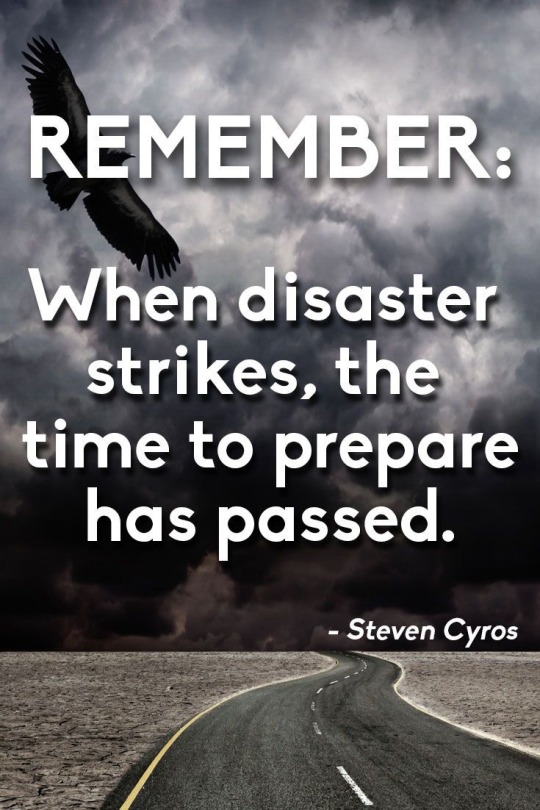
#preparedness saturday#prepper#women preparedness#prepping#emergency preparedness#shtf#preparedness quote
68 notes
·
View notes
Text

Use an Analog Clock as a Compass:
Using a Watch to Find North: The watch method for navigation is useful for finding the cardinal directions of: north, south, east and west. While not being 100 percent accurate, it is handy for crude navigation when a compass is not available and can head you in the correct general direction in camping, bushcraft, backpacking and survival situations. It is also useful in combination with other natural navigation methods found in this link and other resources.
If Located in the Northern Hemisphere:
Align a twig (pointing up) at the edge of your watch so that it casts a shadow onto the face of the watch from the Sun.
Rotate the watch until the twig's shadow (the Sun) is cast directly onto the hour hand.
The halfway point between the hour hand and the 12-oclock mark is your North-South line. Note that during Daylight Saving Time (or Summer Time), your watch is most likely one hour "off" from the "real" time. If this is the case, substitute 1 o'clock for 12 o'clock before finding your North-South line.
The halfway imaginary line will point to South
If only a digital clock is available, draw an analog/dial clock (with the correct time) on paper or in the dirt.
If Located in the Southern Hemisphere:
Align a twig (pointing up) at the edge of your watch so that it casts a shadow onto the face of the watch from the Sun.
Rotate the watch until the twig's shadow (the Sun) is cast directly onto the 12-oclock mark.
The halfway point between 12-oclock and the hour hand is your North-South line. Note that during Daylight Saving Time (or Summer Time), your watch is most likely one hour "off" from the "real" time. If this is the case, substitute 1 o'clock for 12 o'clock before finding your North-South line.
The halfway imaginary line will point to North.
If only a digital clock is available, draw an analog/dial clock (with the correct time) on paper or in the dirt.
[Reference Link]
Related Resources:
Survival Navigation - Find Your Way Out
Wilderness Shelter
Fire Building for Cooking, Heat and Light
Finding, Collecting and Purifying Water in the Wilderness
Handling Injuries, Illness and First Aid in the Wild
[14-Point Emergency Preps Checklist]
[11-Cs Basic Emergency Kit]
[Learn to be More Self-Sufficient]
[The Ultimate Preparation]
[5six7 Menu]
#navigation#compass#prepare4tomorrow#prepper#survival#shtf#lost#clock as compass#compass from a clock#finding directions#campsite#camping#explore#analog watch#prepping#directions#find home#hiking#bushcraft#homesteading#wilderness
95 notes
·
View notes
Text

Download link is at the bottom of the post
#prepping#prepper#shtf#preparedness#survival#survive#survivaltips#self sufficiency#self sufficient living#self sustaining#farming
103 notes
·
View notes
Text





*The mall-ninja tactical Every Day Carry thing is a lot older than people let on.
92 notes
·
View notes
Text
I wanted to use this space to unload my frustration. Today my frustration level is beyond anything I had ever thought it could be. Frustration vs Stress. Which is it?
Does anyone read these blogs actually? I have a feeling I’m talking to myself.
Today I’d like to cover something that’s becoming more of a reality. I’m concerned that the next few weeks we may be more susceptible to a home invasion. With world affairs and the way it’s leaning, I think many are getting more desperate. People are getting more hungry, more unhinged and soon it will be a free for all. Maybe not in two weeks but soon.
How have you fortified your home? Don’t you want to protect your family, yourself or your lifestyle? Take the time and take care of those little things that will help protect you. Here are a few ideas.
1. Fortify the front and back door with long nails or screws
2. Put up solar motion detectors outside around perimeter
3. Put duct tape in an X in your windows so if they break they won’t shatter
4. Sandbag your windows that are accessible
5. Put dowels in windows, leave no room to get it
6. Put bars over windows if possible
7. Get a fire extinguisher for possible fires inside and out
8. Get protection immediately (yes I mean pew pew)
9. Make sure you have a first aid bag fully stocked
10. Put in a battery operated security system
61 notes
·
View notes
Text

#capitalism#socialism#communism#ipoc#indigenous#indigenous people#prepper#propaganda#capitalism memes#native american history#nativeamerican#genocide#landback#waterislife#waterisalive#amerikkka#kkkanada#liberal#liberalism#ndn#usa#usians
268 notes
·
View notes
Text

2024 seems like a good year for the left to stop doing this shit.
32 notes
·
View notes
Photo

#wood#wood chopping#axe#wood stock#wood stash#prepper#pine forest#forest trees#pine trees#wood aesthetic#fire#heat#warm#warmth#adventure#nature#fire place#natural heating#heating#free warmth#free heating#abudance#forest wood
278 notes
·
View notes
Text
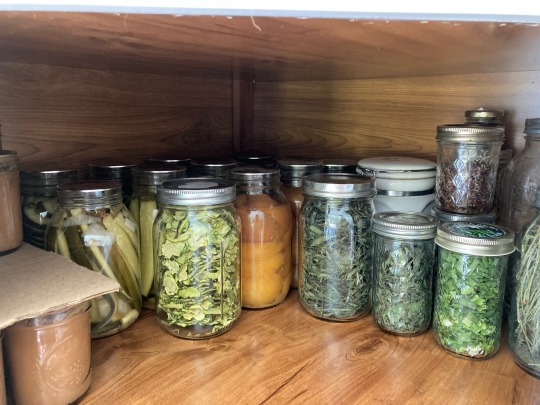
#thé collection is filling out nicely#Im a little dragon and canned produce is my pile of gold coins#canning#canned vegetables#dried herbs#cottagecore#appalachia#southern cooking#southern gothic#prepper#farmblr#farm life
56 notes
·
View notes
Note
What's the prepper mindset for? Like. Should we be worried and if so then what should we be worried about? (saw the book post and that you mentioned 'prepper mindset' which makes me think of those survivalist ppl in usamerican reality shows who live in the middle of nowhere and hoard food? cuz that's only where I've seen it and even then I dont fully get it tho)
I mean, there's a lot of definitions of "prepper" out there, and those shows definitely show one possibility there. Gun nuts who hoard weapons are, unfortunately, another. But neither of those is quite what I'm going for myself...
For me personally, it's sort of a general desire to be prepared for emergencies. Most likely natural disasters, possibly terrorism or a civil war or some such.
The goal: have basic supplies at hand (food's a big one, and water, batteries/power packs, flashlights, extra clothes, some other basic tools, I'm not too concerned with weapons myself), know where they are, know how to use them.
Things like going off-grid or being able to live in the wilderness are part of some preppers' goals, but not mine. And I'm not terribly concerned about the end of civilization as we know it, either. I'm not trying to live in fear--I have an anxiety disorder, I don't need any extra fear there, lol.
But if you have the time, money, and energy for it--which I fortunately do--it doesn't hurt to get a little bit extra together just in case you end up being unlucky and have to deal with, say, a blizzard that knocks out your power, or a wildfire that's heading towards your house, or possibly some sort of terrorist attack or riot but those really are less likely than the above, especially for usamericans like myself.
Obviously those odds do shift based on location. Here in Chicago, I don't really have to be prepared for a hurricane, and earthquakes and volcanoes would also have to be something big and rare (New Madrid fault acting up again or Yellowstone megavolcano blowing, respectively). If I were in Florida, hurricane preparedness would be more important, but I could ditch blizzard supplies. And get outside the US and those odds might shift further--if you're in Ukraine, for instance, stuff for war and physical combat might well be one of the major concerns to prepare for.
Really, much of what I get is either just more of the stuff I'd use anyway (ex. I use battery packs for my phone regularly enough anyway, but instead of just having one or two, I have several as back-ups) or little things that might be handy to have even in a non-emergency situation and aren't difficult to buy or store just in case (ex. paper clips, rubber bands, safety pins... I might not have a specific plan for them but they're good to have on hand).
And I know the post you mentioned, and while it's not traditional prepper stuff, I do think that reading material, whether physical or electronic, is a good thing to have on hand just in case as well. A bit to learn new stuff, but mostly to stave off the boredom. ADHD brain wants options for how to spend time if the Internet goes down, and books and ebooks are a good solution there.
9 notes
·
View notes
Text

#yearzerosurvival.com#survival#preppers#outdoors#prepper blog#survival blog#preppertalk#prepper network#prepper#shtf#bees#save the bees
149 notes
·
View notes
Text

Take some time to really think about what you are going to want and need in your emergency food storage. Reevaluate it from time to time based on changing diet or preferences.
15 notes
·
View notes
Text

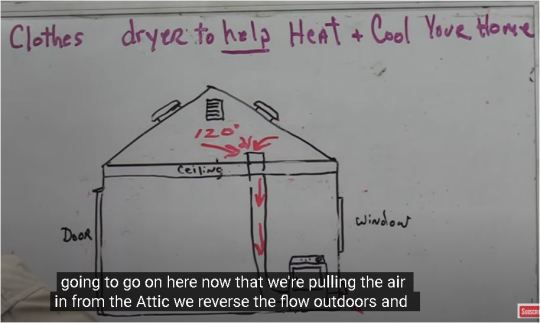
Heating and Cooling the House with Your Clothes Dryer:
First of all, this method of dryer venting should only be used for ELECTRIC dryers (not gas). Additionally, this may be regulated or prohibited by government or may void the dryer warranty so check these out, if you wish, before proceeding with the installation. As with any information you receive, it's always best to do your own [thorough] research before proceeding at face value. Now that that is out of the way, let's proceed with this post.
While researching a dryer venting solution for my friend, I found this option. Because he was renting and did not want to drill a 4 inch hole in the wall, this seemed to be the best solution for him, along with the added benefit of heating his home while drying clothes. His landlord did not express opposition to the idea. There are several configurations, most of which use water to collect the dust that would normally blow into the home environment; some have better filtering than others and you can also make one yourself (DIY). We selected the FUNMAS 3-in-1 Indoor Dryer Vent because of its filtering and functional design.
Basically, instead of running the ducting hose from the dryer to an external vent, the ducting hose is run from the dryer to the Indoor Dryer Vent. It is recommended to clean the indoor vent as needed or after 6-12 uses, depending on the model used. Additionally, the ducting hose should be periodically cleaned out as lint accumulates in its folds and at the dryer exhaust. Totally remove the ducting hose from the dryer and Indoor Dryer Vent, take it outside, and use a brush, leaf blower or vacuum to clean out the accumulated lint residue. Then vacuum out the dryer exhaust before reattaching the ducting hose.
Because the heat from the dryer is not being forced outside, the heat remains in the home which could lower the winter heating bill. Just make sure the Indoor Dryer Vent is not enclosed but exposed to allow the heat to escape to the rest of the house. Also consider that humidity will increase in the house as the dryer removes water from the clothes so running a dehumidifier may be beneficial. Consider other environmental issues as well. Unfortunately, summer is a different matter and another solution may need to be considered to avoid making a warm home warmer. If venting outdoors is impossible, consider hanging clothes outside or employing one or more of these options.
Now, if you're really energetic, the clothes dryer can also be used to cool your home in the summer by pulling attic heat into the dryer's intake which also pulls cooler outside air into the attic to cool the attic and the house. Because the dryer is pulling heated air from the attic, the dryer's heating element may be used less during the drying cycle, saving money.
Resources:
Health/Structural Issues by Discharging Dryer Vent Inside the House
Indoor Dryer Vent Kit: Do They Work (Pros & Cons)
Indoor Dryer Vent and Its Pros and Cons
Periodic Dryer Vent and Hose Cleaning is a MUST
How to Heat and Cool Your Home for Free
The Many Re-Uses for Dryer Lint
Drying Clothes Without a Dryer
Off-Grid Laundry Day
[Reference Link
[14-Point Emergency Preps Checklist]
[11-Cs Basic Emergency Kit]
[Learn to be More Self-Sufficient]
[The Ultimate Preparation]
[5six7 Menu]
P4T receives earnings from qualifying purchases using re-directing links that may be contained in this Post. Thank You for your support.
#clothes dryer to heat and cool house#prepare4tomorrow#prepper#survival#diy#clothing#heating cooling#indoor dryer vent#attic air to dry your clothes#laundry
37 notes
·
View notes
Text
Bushcraft 101: A Field Guide to the Art of Wilderness Survival (FREE) ePUB
71 notes
·
View notes